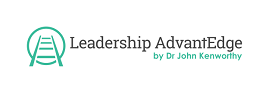- Learn about effective communication and engagement and reflect on the relevance of this with respect to young learners.
- Take part in a Play of Life® 3D simulation technique to fast track personal learning insight into better student engagement.
- Learn about some of the hidden factors impeding the achievement of young learners and share some practical pointers for effective curriculum delivery.
- Identify practical steps as to what can be done personally and as a faculty to improve student learning.
In this one-day workshop participants will enjoy an opening session delivered by Psychiatrist and Counsellor, Dr. Carlos A. Raimundo on the neuro-science behind effective communication and engagement. Participants will have many opportunities to reflect on the relevance of this information with respect to Young Learners. Then, we will guide the group through a Play of Life® 3D Simulation technique to fast track personal insight into better student engagement and to identify the first practical step needed to make it a reality in the classroom.
The technique is fun, elegant and respectful. We will talk about the neuroplasticity of the brain and the conditions needed for Young Learners to sustain positive change. And then about some of the hidden factors impeding the achievement of young learners and share some practical pointers for effective curriculum delivery. The group will then engage in another Play of Life® exercise called the Towards and Away From technique. Participants will identify immediately practical steps as to what can be done personally and as a faculty to improve student learning on campus through better student engagement and a more conscious containment of one another as colleagues.
If you are struggling with Gen “Why” – you need this.
Contact us now for a confidential, no obligation discussion.
Workshop Agenda
8:30-9:00 Registration and coffee
9:00- 11:00 The Neuro Science behind Communication and Engagement- How it works in the brain.
Getting inside the minds of Young Learners- How are their needs different? At what level of thinking do they operate? Why engagement and containment are so essential for learning.
The Relational Model of human interaction compared to Traditional Western thinking. An invitation to change the way we view our students.
11:00- 11:15 BREAK (15 minutes)
11:15-12:45 The Power of the First Step technique – A hands on Personal Transformation Exercise
What can I do to practically enhance my own engagement and communication with the young learners in my care? Get ready to enjoy a Play of Life® 3D simulation exercise for fast-tracking personal insight and turning theoretical knowledge about engagement into practical action.
12:45-1:15 LUNCH (30 minutes)
1:15-2:45 Can people really change? What are the conditions necessary for a Young Learner’s change to be sustained? What’s my constructive role in the process? What does that look like in my classroom?
This is an interactive seminar on the Neuroplasticity of the brain and the social and emotional factors and hidden learning disabilities potentially impeding Young Learners’ vocational outcomes. Some practical tips will also be shared on how to cover the curriculum without sacrificing engagement.
1:45-2:45 The Towards and Away From technique – A hands on Group Transformation Exercise
What are we doing individually and collectively as a faculty towards helping our students optimally achieve desired vocational outcomes. What are we doing that is moving us away from our goals?
2:45- 3:00 BREAK (15 minutes)
3: 00-3:45 Group Discussion and Analysis of discoveries made: What are the common denominators for moving forward to ensure we are providing the conditions necessary for our Young Learners to reach desired outcomes? What practical steps can we implement tomorrow to ensure both we and our students feel contained and supported in the journey towards excellence?
3:45-4:00 Feedback and Evaluations




![Reblog this post [with Zemanta]](http://img.zemanta.com/reblog_e.png?x-id=b7f4a2bf-b3a2-4eec-86a0-51aae4968c63)
![Reblog this post [with Zemanta]](http://img.zemanta.com/reblog_e.png?x-id=1e113d99-3e00-499f-ac75-957036f73769)
![Reblog this post [with Zemanta]](http://img.zemanta.com/reblog_e.png?x-id=d431556a-4cbd-4f7d-ba72-2cefc2aaca9d)